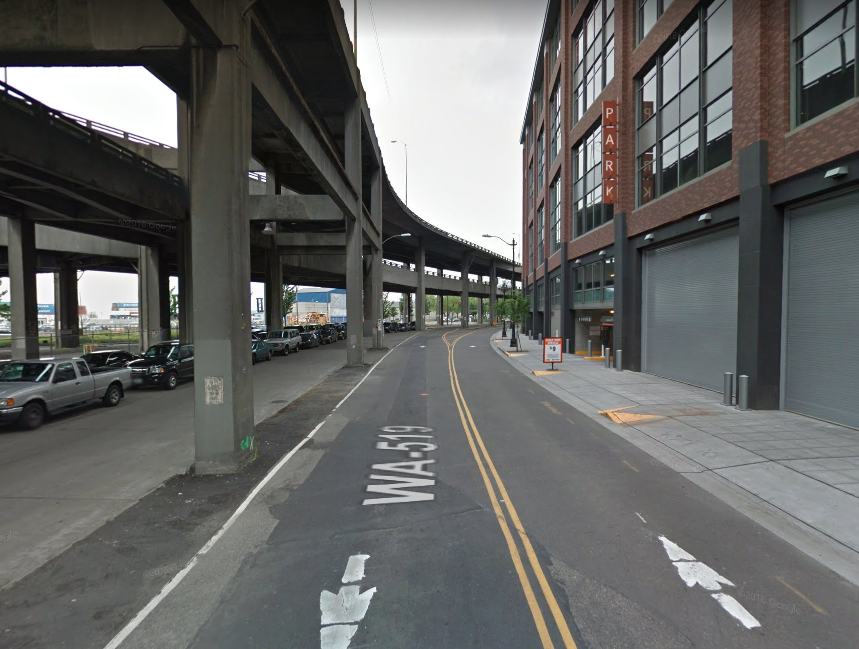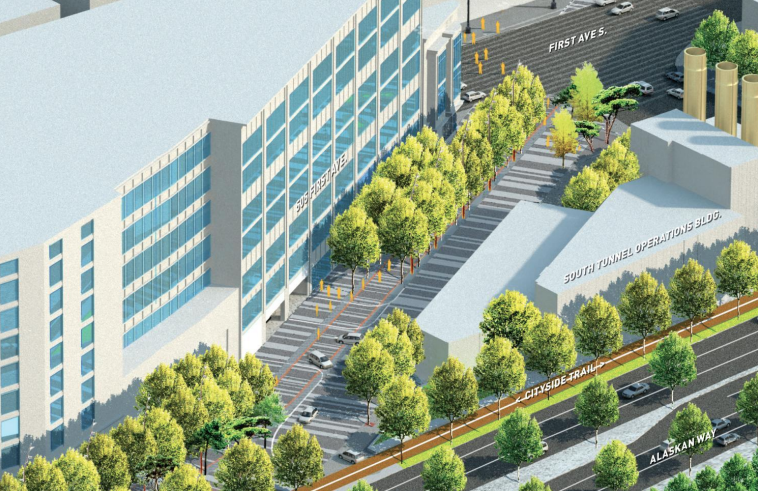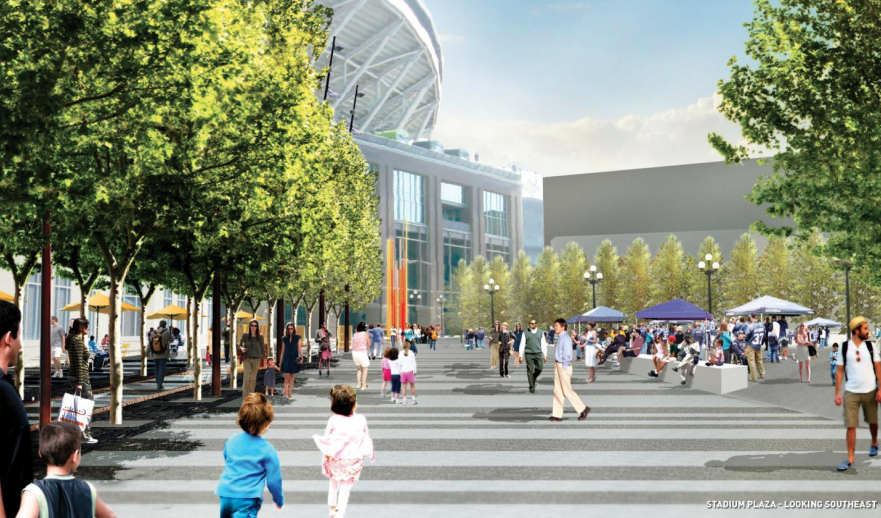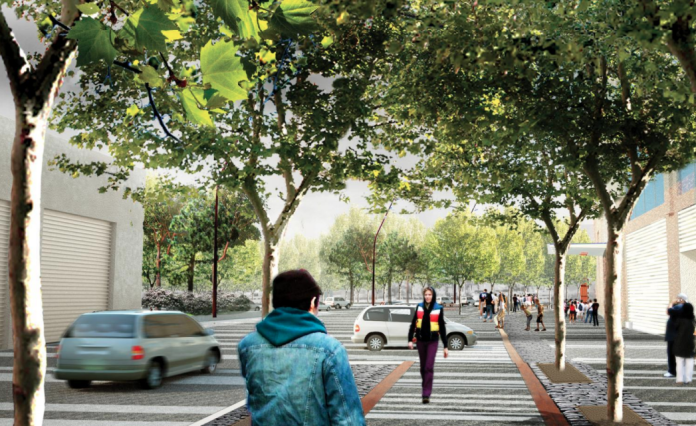
The Washington State Department of Transportation (WSDOT) says work will start this month on one of the final pieces of the Alaskan Way Viaduct Replacement Program: completing connections to city streets around the SR-99 tunnel’s south portal. This spring, WSDOT awarded a $25 million contract to complete a number of projects that will wrap up work on that end of the tunnel project, including a repaving of S Dearborn Street, and a rebuilding of 1st Avenue S and S Charles Street near Lumen Field. But some other projects focused on increasing bike and pedestrian connectivity around the stadiums have likely not gotten as much attention as some of the more high-profile projects on the central waterfront.
Cityside Trail
The primary bike trail along the waterfront is referred to as the Portside Trail. It connects S King Street to protected bike lanes on East Marginal Way and by extension West Seattle. Ultimately, the trail will run along the rebuilt Alaskan Way all the way to Pine Street, where riders can connect with the new Elliott Way bridge over the railroad tracks and access Belltown. (Hopefully a direct connection to the Elliott Bay Trail at Myrtle Edwards Park can be made as well.)
Another trail, dubbed the Cityside Trail, is being built that will also connect at S King Street but run along the other side of Alaskan Way south to S Atlantic Street.
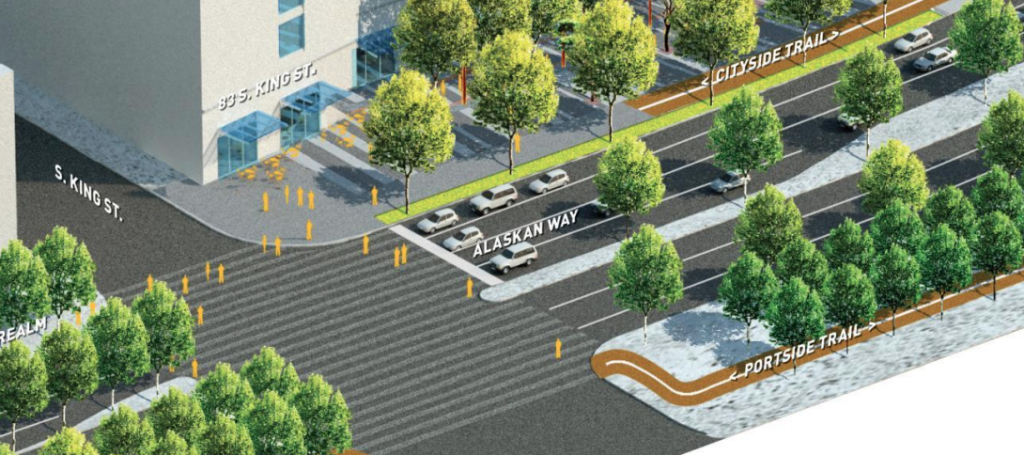
This bike route will probably be pretty popular with people biking from West Seattle for events at the stadiums, and for people who already use the paint bike lanes on Royal Brougham to connect to the rest of SoDo, but its utility will be limited by the lack of other separated bike facilities in the neighborhood. It’s also running directly next to SR-99, which might not be everyone’s first choice.

Railroad Way Pedestrian Corridor
This aspect of the waterfront project is actually going to be pretty transformative compared to what existed before. Railroad Way is a street that cuts across the street grid, and used to follow the path of the now-demolished Alaskan Way Viaduct as it veered away from the waterfront toward the stadium district heading south. With the completion of the new Alaskan Way, Railroad Way will be transitioned from being primarily a corridor for vehicles to a pedestrian-oriented corridor between the stadium district and the new waterfront. That doesn’t mean Railroad Way is turning into a full pedestrian street. WSDOT is also constructing a new addition to its South Tunnel Operations Building, an equipment garage that will be accessed via Railroad Way. The street will also remain the access point for several garages for buildings along the adjacent streets.
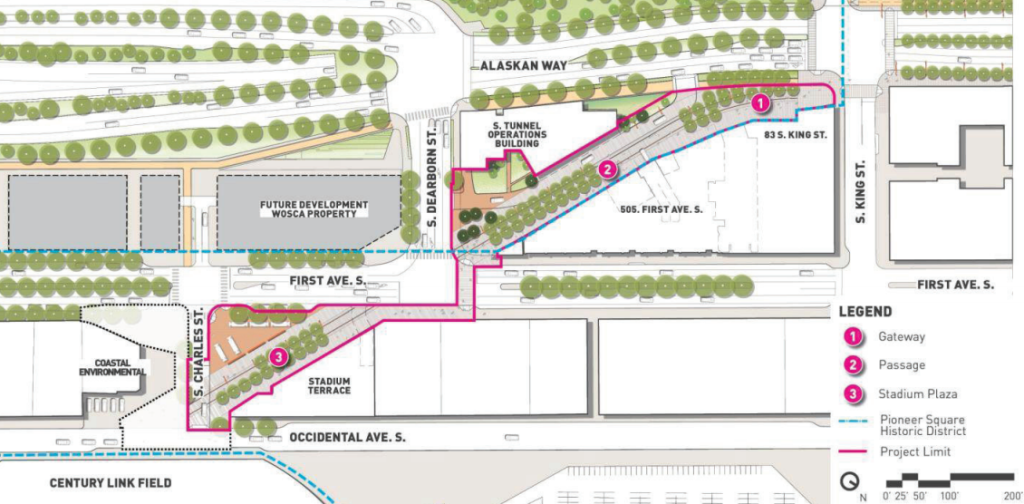
Pedestrian space will be delineated from the vehicle driveway portion of the roadway primarily using trees and pavement types. In a nod to the railroad-focused history of the street (all of Alaskan Way used to be called Railroad Way and was a major confluence of rail lines), the paving along the street will be created to mimic a railroad track bed. The primary pedestrian corridor will run between two rows of trees set where the “tracks” in the faux railway are. But the space between the buildings along the east side of the corridor and the trees will also be pedestrian space, providing a large amount of space to walk and roll.
The remaining space for driveway and utility access will not be separated from the pedestrian area by a curb along most of the street, and there will be a large segment without any trees where the garage entrances and exits for 505 1st Ave S currently exist.
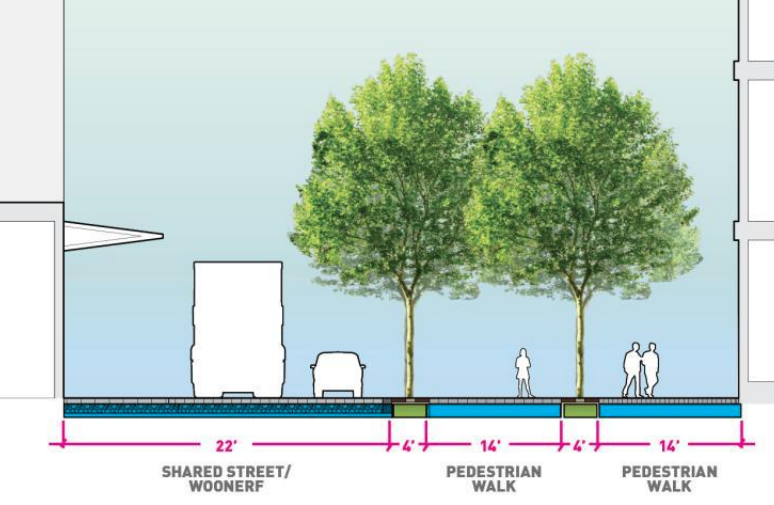
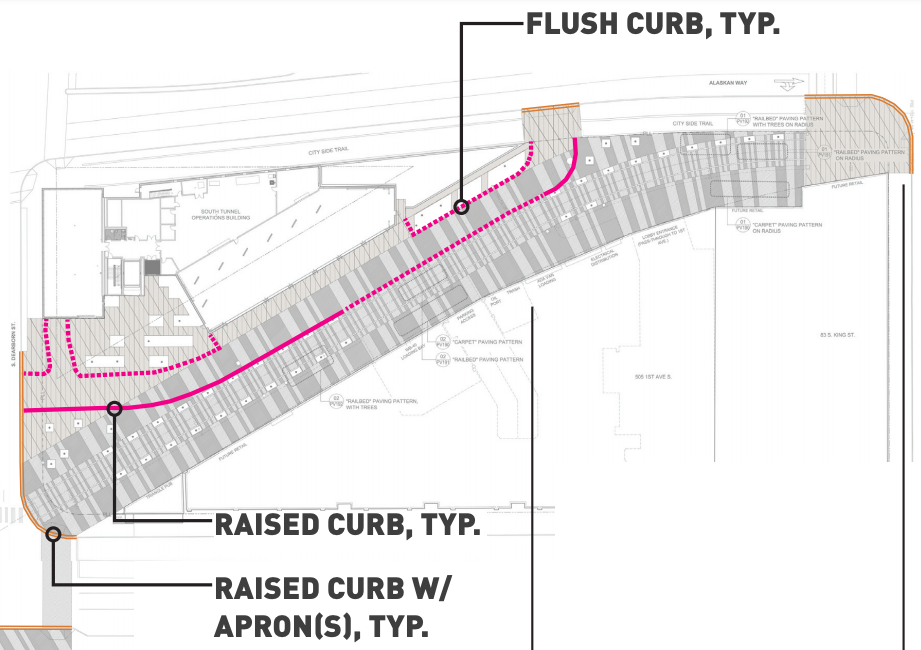
South of 1st Avenue S, the pedestrian corridor continues to Occidental Avenue S and the front door of Lumen Field. This space is intended to act more as a front plaza for the football stadium, providing a space for people to gather after events let out and to hold stadium-adjacent events themselves. There’s only one small segment of this block that provides vehicle access to a garage.
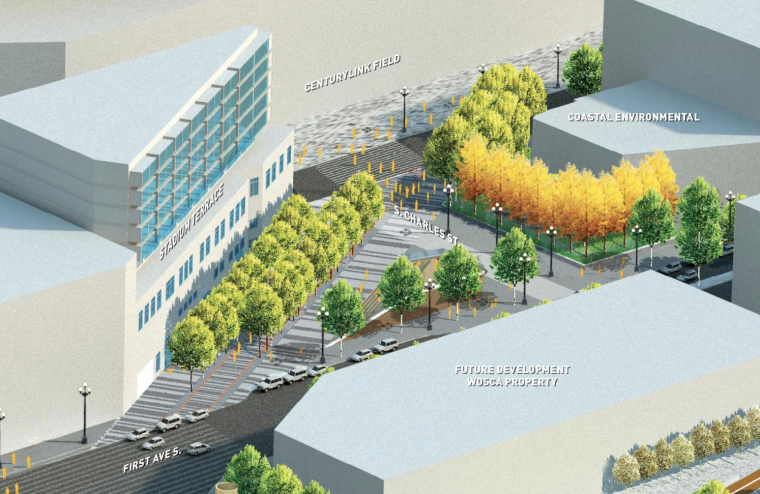
Currently this area of Railroad Way is used as parking for stadium events, but it will be revamped into pedestrian-first space that people will actually want to utilize — that’s the plan, anyway.
The pedestrian corridor along Railroad Way is expected to be completed by early next year, with work completely wrapped up on these south end street connections by next fall. Separated out from the main Alaskan Way corridor, which was a missed opportunity to truly create a people-centered waterfront, the improvements on Railroad Way look to be a positive addition to a fairly car-centric area of the city. If it all comes together, it could prove pretty iconic.
Ryan Packer has been writing for The Urbanist since 2015, and currently reports full-time as Contributing Editor. Their beats are transportation, land use, public space, traffic safety, and obscure community meetings. Packer has also reported for other regional outlets including BikePortland, Seattle Met, and PubliCola. They live in the Capitol Hill neighborhood of Seattle.

